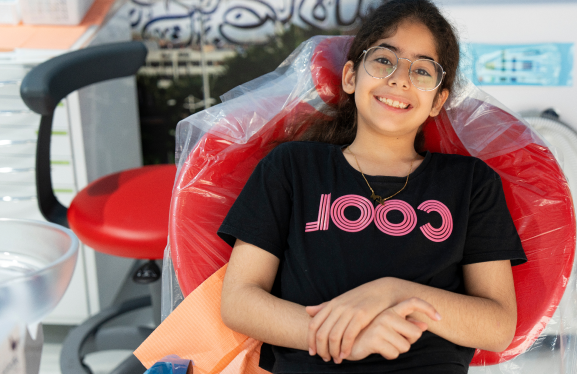Pulp Therapy
What is a Pulp Therapy?
When a cavity gets too large and deep, it can begin to reach all the way through the tooth and approach the nerve of a baby or permanent tooth. If this happens, the tooth and gums may become infected and inflamed. Situations like this can call for a Pulp Therapy. Pediatric pulp therapy is designed to save infected or damaged primary, or baby, teeth.
"It’s important to save the affected primary tooth until the permanent tooth grows in. same thing to permanent tooth to preserve its function for the lifetime."
Curing toothache with Gentle Endodontics
Whether to remove a baby tooth or treat it, our dentist will discuss their decision with parents according to many considerations such as the child’s medical history , whether the tooth can be restored or not and of course the alternative of pulp therapy would be removing the tooth. At Appolonia Dentistry for Children, our dedicated root canal specialist offers an extremely high level of skills, care and experience. In addition tohaving access to the most advanced dental microscope for highly accurate diagnosis and treatment.
Depending on the extent of a cavity, there are numerous treatment options that our specialists will consider - from removing the decay and simply filling the tooth, to removing all the affected pulp, to root canal treatment and placing a crown.
It is important to note that as opposed to adult teeth, root canals of baby teeth are different. For children, the tooth’s shape and position is salvaged as opposed to completely extracted and taken out.
Is the procedure of pulp therapy the same for primary and permanent teeth?
Unlike root canal treatment in adult teeth ,there are two types of pulp therapy done in primary teeth :
According to the extent of the cavity and the pulp health of a tooth , the dentist will choose the appropriate treatment measure .
There are two types of Pulp Therapy:
Pulpotomy
Pulpotomy is a partial pulp removal. Damaged pulp from the tooth’s crown is removed, leaving healthy pulp in the root canals. Once the pulp is removed, the tooth is filled with a special material that preserve the pulp in the root canals to stay healthy and it is stabilized it with a crown.
Pulpectomy
Pulpectomy is the total removal of damaged pulp, not just from the crown but also from the roots, too. Once pulp is removed, the tooth is filled with an absorbable material for support, and then stabilized with a crown.
For permanent teeth we use different strategy especially immature permanent teeth (young permeant teeth).
Why Choose Pulp Therapy Over Tooth Extraction?
Pulp therapy attempt to salvage as much of a tooth as possible. So, after removing any diseased or infected area, the tooth’s structure is usually kept, while supported by a crown, in order to maintain the shape of the tooth in the smile.
Saving baby teeth with pulp damage is preferred to primary tooth extraction. By doing this, it allows for other teeth in the mouth to grow and develop into the right places when permanent tooth also come in. By ensuring that the original tooth can be kept in its position, it will help the child retain full function of their smile, teeth, jaw and tongue. In addition, the child needs his teeth to maintain good eating habits which is good and important for his growing.

What are the symptoms of Damaged Pulp
Parents should avoid trying to diagnose their children. Proper diagnosis requires a specially trained eye and tools from a trained pediatric dentist. However, there are some signs that can point to a possible need for a pulp therapy. These include:
- A child complaining of toothaches or tooth pain. especially tooth ache that wake the child up at night
- Sensitivity when eating
- Redness and swelling of the gum around the tooth
- Unexpected loose tooth

Our Root Canal Specialist
Our endodontic specialist has years of experience of root canal treatment.







